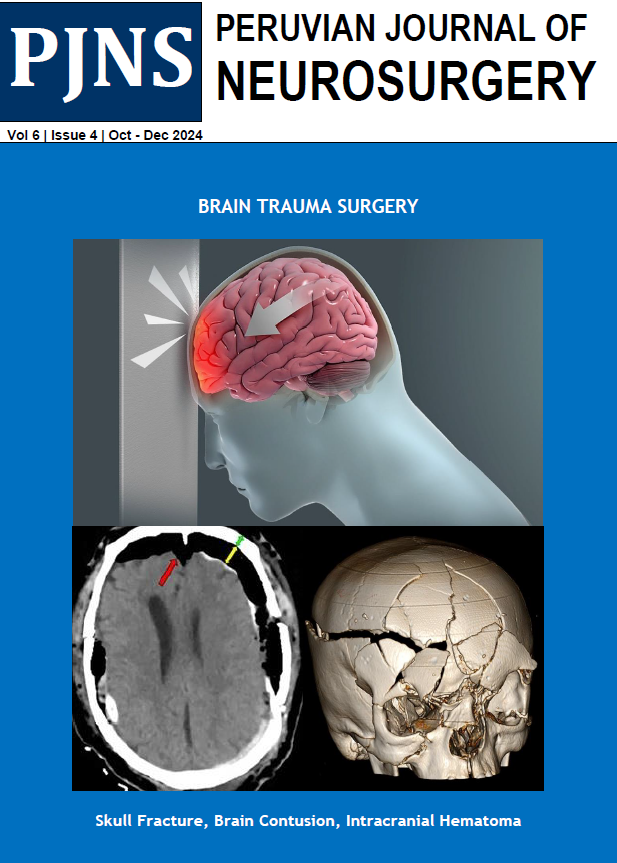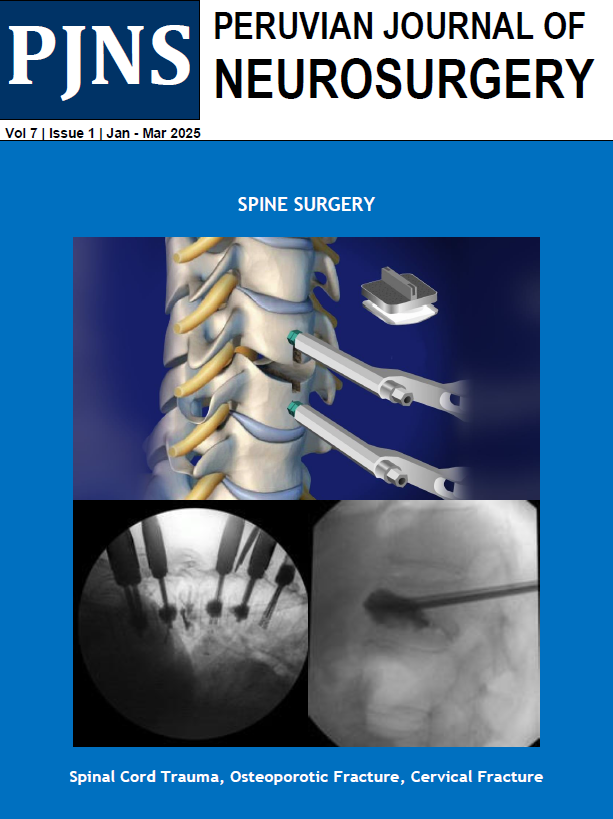|
Objective: Free-living amoeba infections present with acute intracranial hypertension that are difficult to manage. In Peru, the most reported species are Balamuthia spp., Acanthamoeba spp., and Naegleria spp. We present the case of a child with a torpidly progressing amoebic meningoencephalitis, seen in our hospital in May 2023. Our objective is to describe the aggressive clinical presentation as a differential diagnosis for a brain tumor. Clinical case: A 9-year-old male patient from rural northern Peru with a history of protein malnutrition presented with an initial clinical presentation of mild headache, progressive weakness in the right side of the body, subsequently progressing to severe headache, vomiting, and neurological deterioration. Examination revealed drowsiness, global aphasia, right hemiplegia, and left ptosis. Three surgeries were performed in two stages: First, a left frontotemporal craniotomy and partial excision of a poorly defined, yellowish lesion attached to the neurovascular structures of the Sylvian valley; second, a left decompressive craniotomy and external ventricular drainage for severe intracranial hypertension. Conclusion: Treatment of cerebral amebiasis should be multidisciplinary. Early initiation of specific drugs is crucial to reduce mortality and complement surgical and intensive care treatment, given the aggressive nature of the infection. Keywords: Amebiasis, Amoeba, Naegleria, Intracranial Hypertension, Hemiplegia. (Source: MeSH NLM)
|
|
Objetivo: Las infecciones por amebas de vida libre cursan con hipertensión endocraneal aguda de difícil manejo. En el Perú, las especies más reportadas son Balamuthia spp., Acantameba spp. y Naegleria spp. Se presenta el caso de un niño con meningoencefalitis amebiana de evolución tórpida, atendido en nuestro hospital en mayo de 2023. Nuestro objetivo es describir el cuadro clínico de curso agresivo como diagnóstico diferencial frente a tumoración cerebral. Caso clínico: Paciente varón de 9 años, procedente del norte rural del Perú, con antecedente de desnutrición proteica, que presentó un cuadro clínico inicial de cefalea leve, debilidad progresiva del hemicuerpo derecho cursando posteriormente con cefalea intensa, vómitos y deterioro neurológico. Al examen: Somnolencia, afasia global, hemiplejia derecha y ptosis izquierda. Se realizaron tres cirugías en dos tiempos quirúrgicos: Primero, una craneotomía frontotemporal izquierda y exéresis parcial de una lesión mal delimitada, color amarillento, adherida a estructuras vasculonerviosas del valle de Silvio; Segundo, una craneotomía descompresiva izquierda y drenaje ventricular externo por hipertensión intracraneal severa. Conclusión: El tratamiento de la amebiasis cerebral debe ser multidisciplinario. El inicio temprano de fármacos específicos es crucial para reducir la mortalidad y complementar el tratamiento quirúrgico y de cuidados intensivos, debido a la agresividad de la infección. Palabras Clave: Amebiasis, Ameba, Naegleria, Hipertensión intracraneal, Hemiplejía. (Fuente: DeCS Bireme)
|


